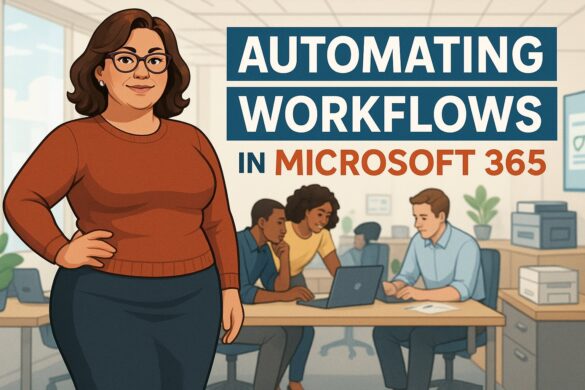Nearly 25% of Jobs Disrupted: Unveiling AI’s Impact on Workforce Evolution
As the world continues to embrace technological advancements, artificial intelligence (AI) has emerged as a key player in shaping the future of work. Nearly 25% of jobs are predicted to be disrupted within the next five years as AI and automation revolutionize industries and redefine workforce roles.
In the face of this transformation, you must stay informed about the sectors likely to experience job losses and those expecting growth. Understanding these changes will empower you to make strategic career choices and proactively adapt to an ever-evolving employment landscape.
As you navigate the upcoming shifts in the global workforce, focusing on developing versatile skills and embracing lifelong learning will be essential. The ability to seamlessly adapt is more important than ever as AI redefines what it means to be a part of the modern workforce.

AI’s Impact on Job Disruption
Automation and the Loss of Traditional Jobs
As AI develops, you’ll notice that many traditional jobs are disappearing due to automation. A World Economic Forum report reveals that nearly 25% of jobs are expected to be disrupted within the next five years. The COVID-19 pandemic has only accelerated this shift. With AI being a key driver in algorithmic displacement, you can anticipate a significant loss of jobs in certain sectors of your economy.
Job Growth in AI-Driven Industries
Despite losing traditional jobs, AI also catalyzes job growth in new sectors. The World Economic Forum study highlights how the positive net impact of new technologies like AI and big data analytics will create new job opportunities in the next five years. As a part of the workforce, learning new skills and staying adaptable will be critical for your career growth in an AI-driven economy.
A Global Perspective
The effects of AI disruption are not limited to any single country. A Goldman Sachs report estimated that AI automation could impact 300 million jobs worldwide, including in the US and Germany. However, adopting AI technology can increase labor productivity, possibly boosting global GDP by up to 7% over time. This transition is forcing governments worldwide to reevaluate their approach to labor markets and education systems to support their citizens during this transformative period.
Workforce Transformation
The Necessity of Upskilling and Continuous Learning
In today’s rapidly evolving job market, you must invest in your workforce’s education and adopt a mindset centered around upskilling. Focusing on continuous learning can help your employees gain the necessary digital skills and expertise in machine learning to navigate the challenges stemming from AI’s impact on the global workforce. Remember, it’s not only about training in technical aspects but also fostering communication, emotional intelligence, and other soft skills crucial for success in a dynamic work environment.
Changes in Job Roles and Responsibilities
As AI transforms the job landscape, many industry roles and responsibilities will change. You must stay informed about these shifts and encourage your employees to adapt and learn new skills. Collaborate with industry associations to predict the demands of your sector and implement strategies that ensure your workforce is prepared for these changes. Adopting a proactive approach will help your employees maintain relevance in a market where many job roles are disrupted.
The Expansion of Remote Work and Flexibility
One of the consequences of workforce transformation is an increased emphasis on remote work and flexibility. As employees increasingly integrate digital tools into their daily routines, they can enhance their productivity and performance and are equipped to work remotely when needed. This offers your workforce the convenience of a better work-life balance and the ability to contribute effectively to your organization.
By embracing remote work, your company can tap into a broader talent pool, bolstering your workforce skills and capacity for innovation. Ensure that you provide remote employees the necessary support and resources, including health and social benefits, and encourage regular communication among team members to maintain a connected and thriving work environment.
The Role of AI in Various Sectors
Artificial intelligence (AI) has a significant impact on various industries. By understanding its role in sectors such as manufacturing, healthcare and retail, you can prepare for its effect on the workforce and your career.
Manufacturing and Supply Chain
AI plays a transformative role in the manufacturing and supply chain industries. Automation driven by AI technology increases production efficiency and allows for more consistent quality control. As a result, your company may experience productivity growth. However, this might lead to job losses in assembly lines and data entry areas.
AI also improves supply chain management by streamlining logistics and predicting demand patterns. This information helps you optimize inventory levels, reducing the risk of shortages or overstocking.
Healthcare and Life Sciences
In the healthcare and life sciences sectors, AI offers many opportunities for growth and innovation. It enhances patient care by supporting early detection, accurate diagnoses, and personalized treatment plans. AI-powered tools can also assist in drug discovery and development processes, helping you create new therapies more efficiently.
Despite these benefits, healthcare professionals might face new challenges as well. AI solutions could replace certain tasks in medical data analysis or medical imaging interpretations, potentially disrupting the job market in these areas.
Retail and Customer Service
AI impacts the retail and customer service sectors by personalizing the customer experience, optimizing operations, and streamlining inventory management. For instance, chatbots can help address customer inquiries, freeing up your customer service team to focus on more complex tasks.
AI in retail transforms the shopping experience by leveraging big data analytics to offer personalized recommendations and promotions. While this technological advancement can drive sales and improve customer satisfaction, certain jobs, such as cashier positions, may be at risk due to the increasing adoption of automated checkout systems.
By understanding AI’s role in these sectors, you can adapt your skills and knowledge to remain competitive in the workforce.
Implications for Economic Growth
Globalization and Demographic Shifts
As nearly 25% of jobs are set to be disrupted in the next five years, you should be aware of how globalization and demographic shifts will impact the economy. Countries like Australia are experiencing an aging population, which may result in a higher dependency ratio and challenges to the labor market regarding skill gaps and retirement. Your policymakers should be prepared to leverage AI-driven automation to address these challenges and maintain a competitive advantage in the global market.
Sustainability and AI’s Contribution to GDP Growth
AI solutions can contribute significantly to GDP growth, improving the efficiency of various sectors like cybersecurity, computing, and sustainable practices. Embracing AI technologies can help you achieve your sustainability goals and create a more environmentally friendly economy. Implementing AI in energy consumption, waste management, and resource allocation will reduce your ecological footprint and create new economic growth opportunities. By prioritizing sustainable solutions, your economy can benefit from AI’s potential to boost GDP and drive long-term progress.
Challenges and Future Outlook
Role of Governments and Industry Associations
Governments and industry associations play a critical role in managing the impact of AI on workforce transformation. Developing policies and regulations ensures a smooth transition for businesses and employees affected by AI disruptions. As an advocate, you can push for initiatives that support upskilling, reskilling, and fostering innovation to adapt to the evolving labor markets.
Integration of AI Solutions into the Workplace
Integrating AI into your workplace presents challenges in terms of change management, resource allocation, and employee training. It is vital to establish clear communication channels to help your team understand the benefits of AI adoption. Encourage employees to embrace AI by providing relevant training and opportunities to collaborate with AI systems.
Consider these steps for successful integration:
- Assess the current skill set of your workforce
- Identify areas where AI can add value
- Implement AI in a phased manner
- Track progress and adjust strategies as needed
Balancing Automation and Human Decision-Making
Striking a balance between automating tasks and maintaining human decision-making can be tricky. As you deploy data scientists and AI solutions, ensure they complement your employees’ skills rather than replace them. Create a culture that promotes collaboration, where employees and AI work together to improve productivity, decision-making, and innovation.
To achieve this balance, keep these points in mind:
- Recognize the strengths of both humans and AI
- Create a feedback loop to continuously refine AI models
- Define boundaries where AI should not interfere in the decision-making
- Encourage employees to focus on creative and strategic tasks
By navigating these challenges, you can better prepare for AI’s inevitable disruptions and ensure a successful workforce transformation in the evolving landscape of automation, data science, and technological advancements.



